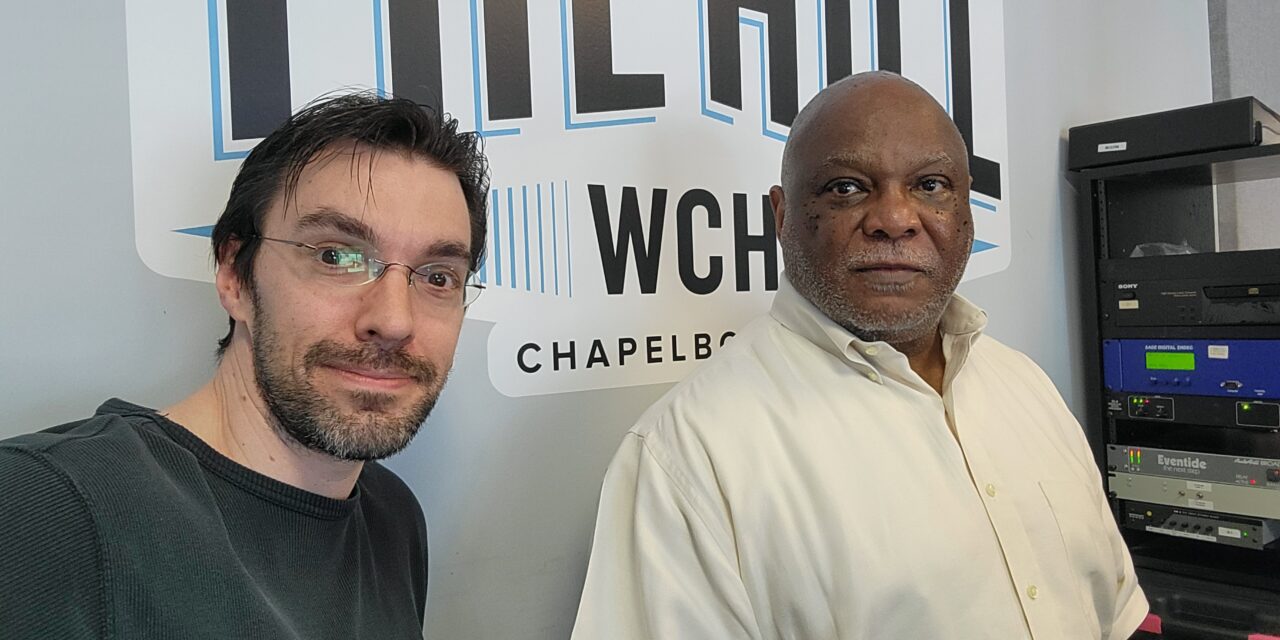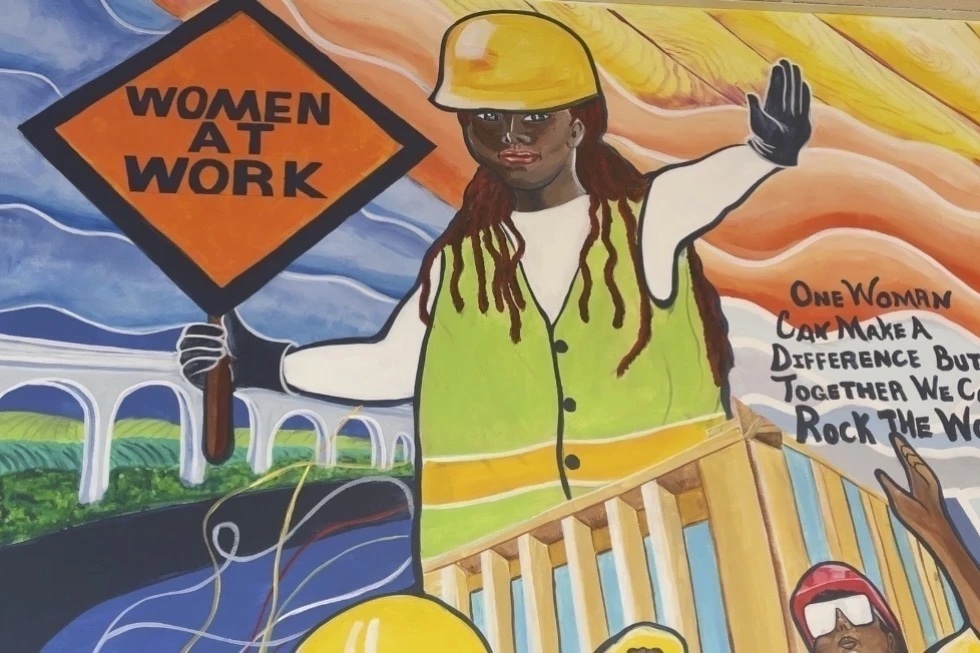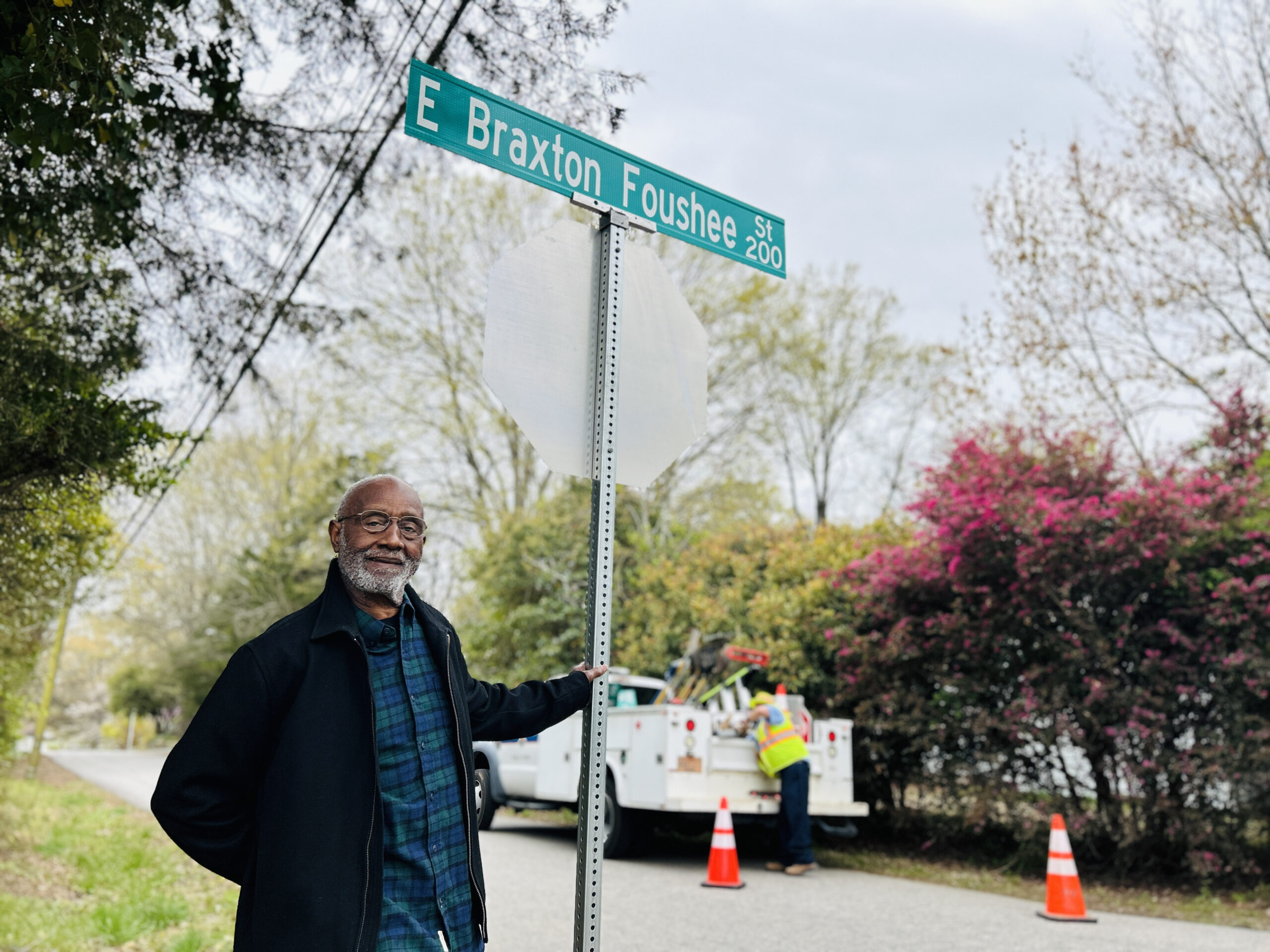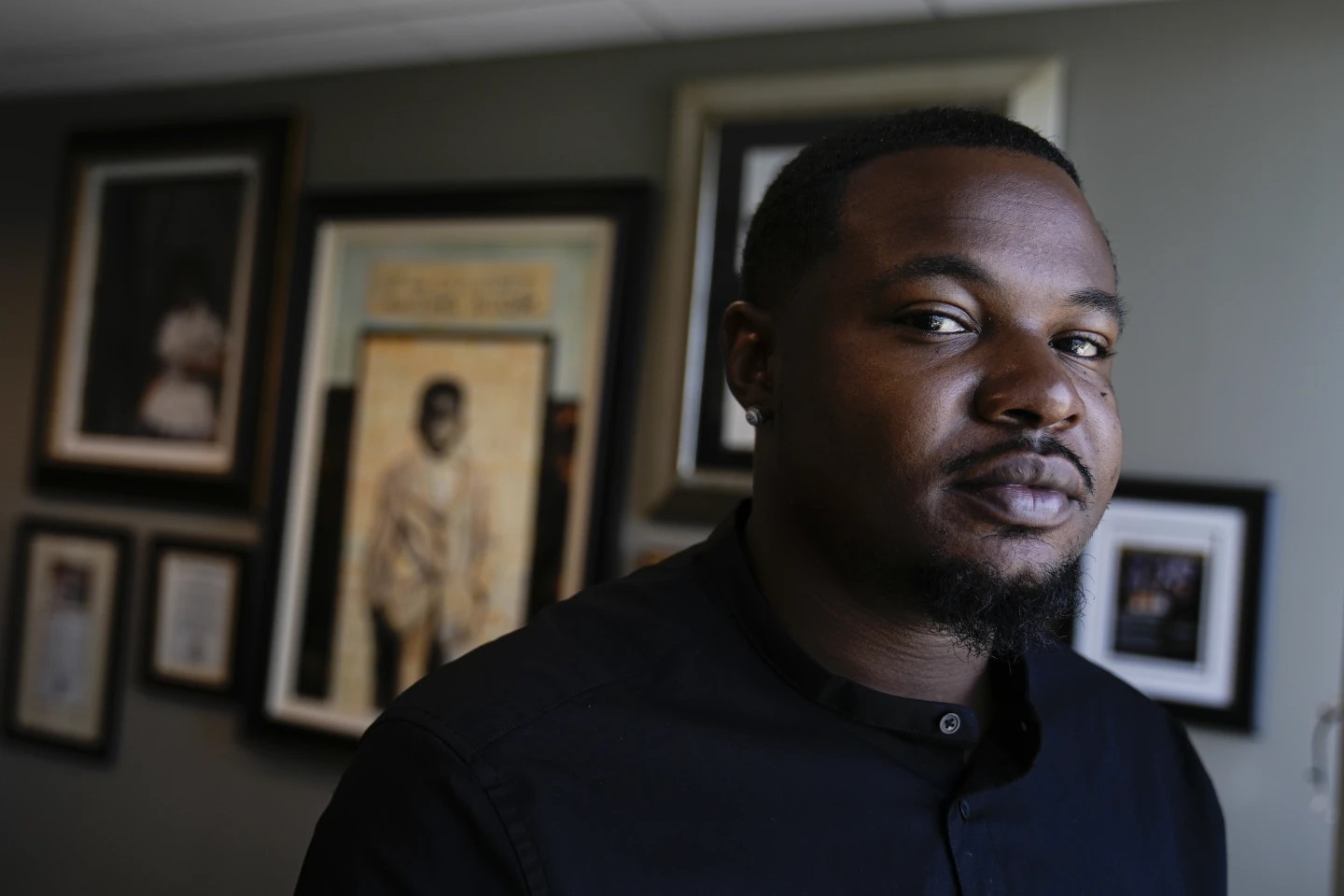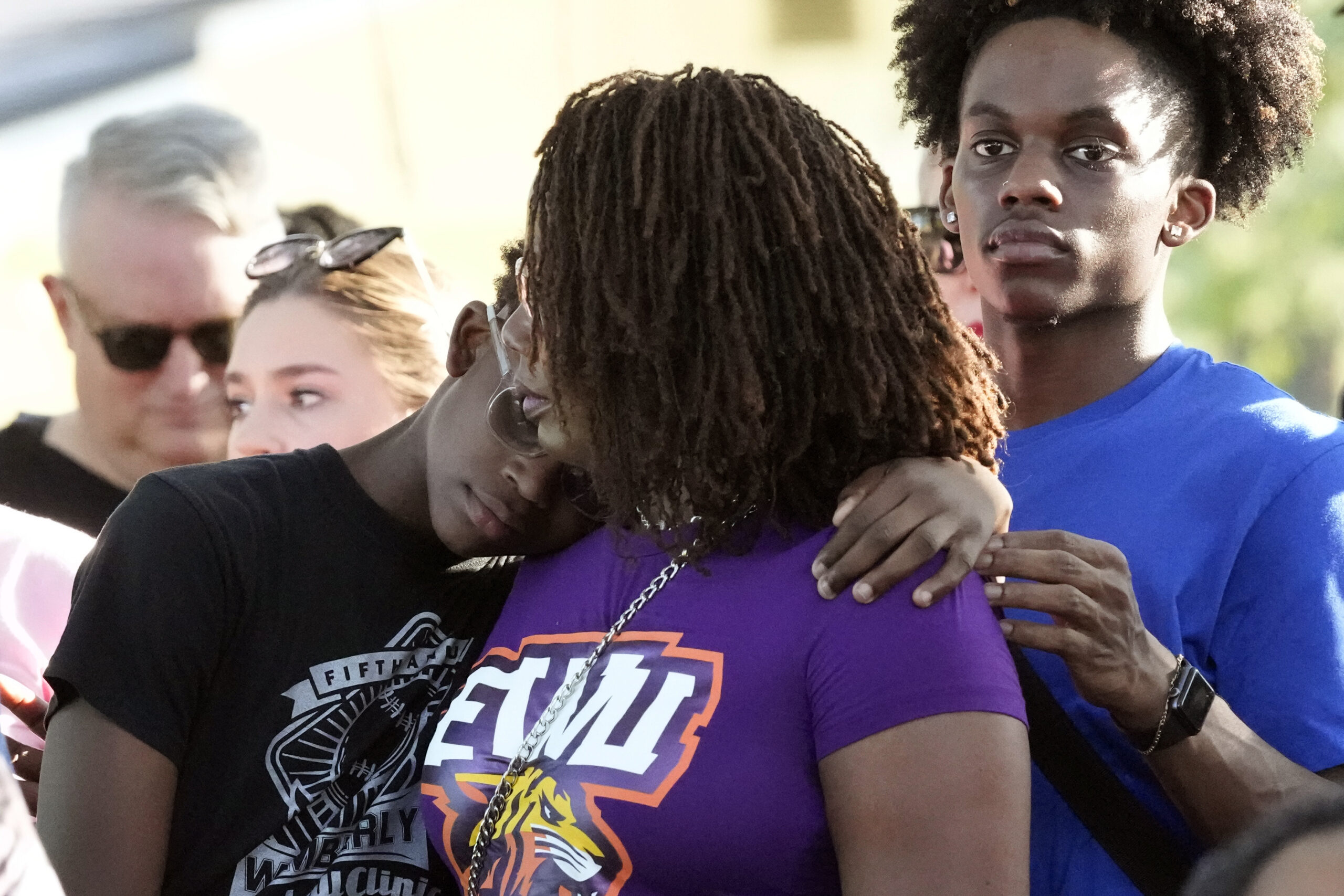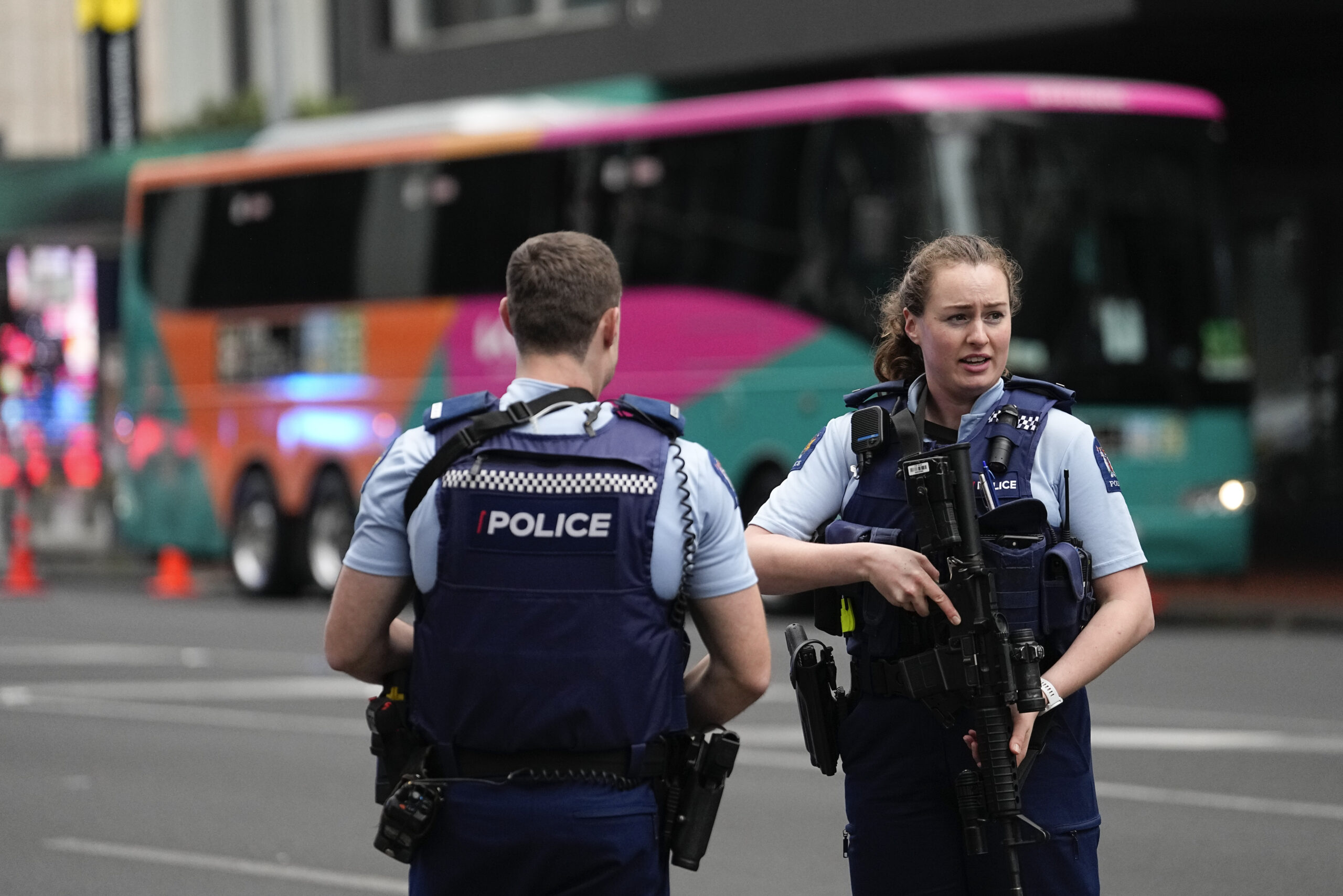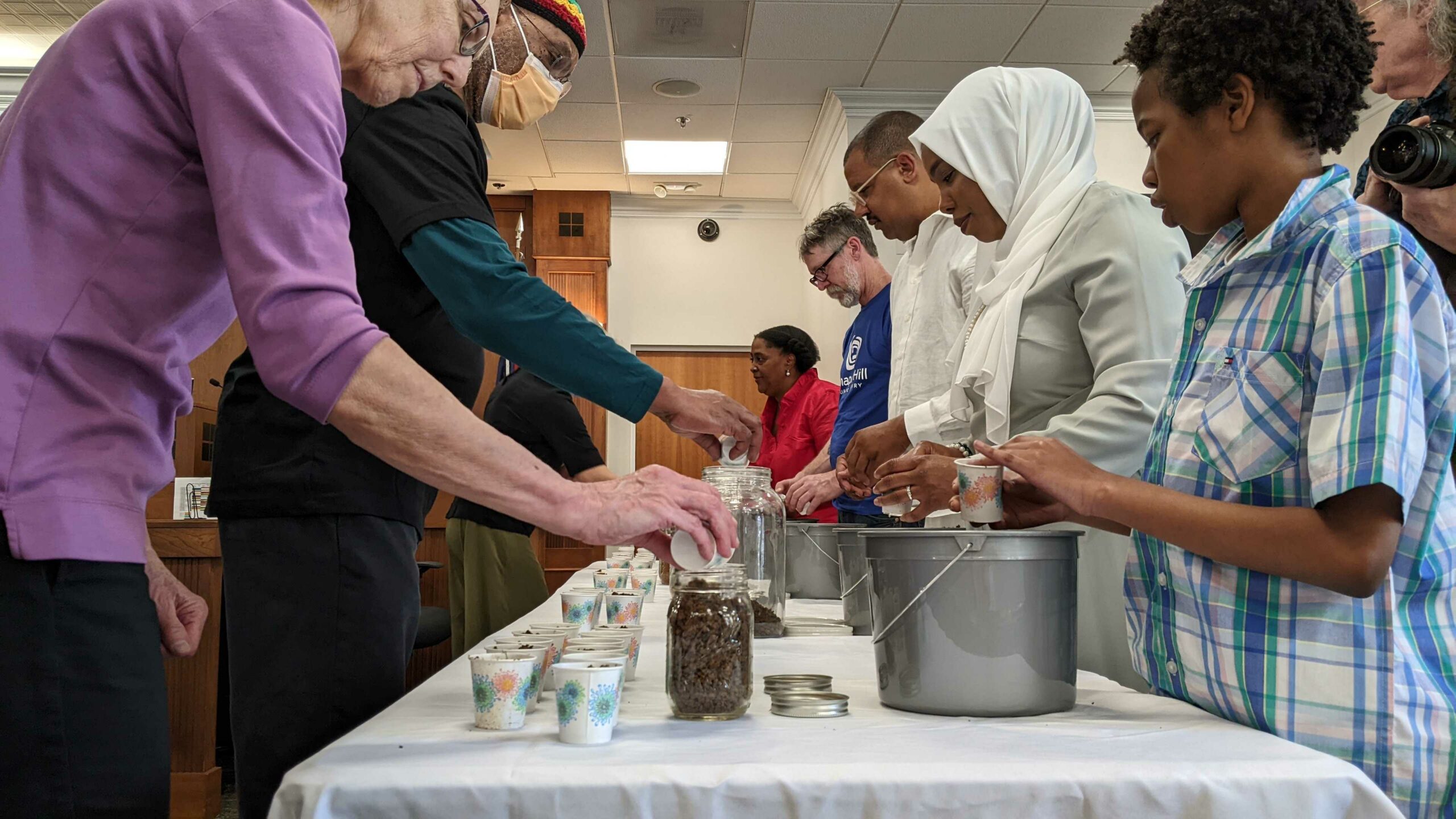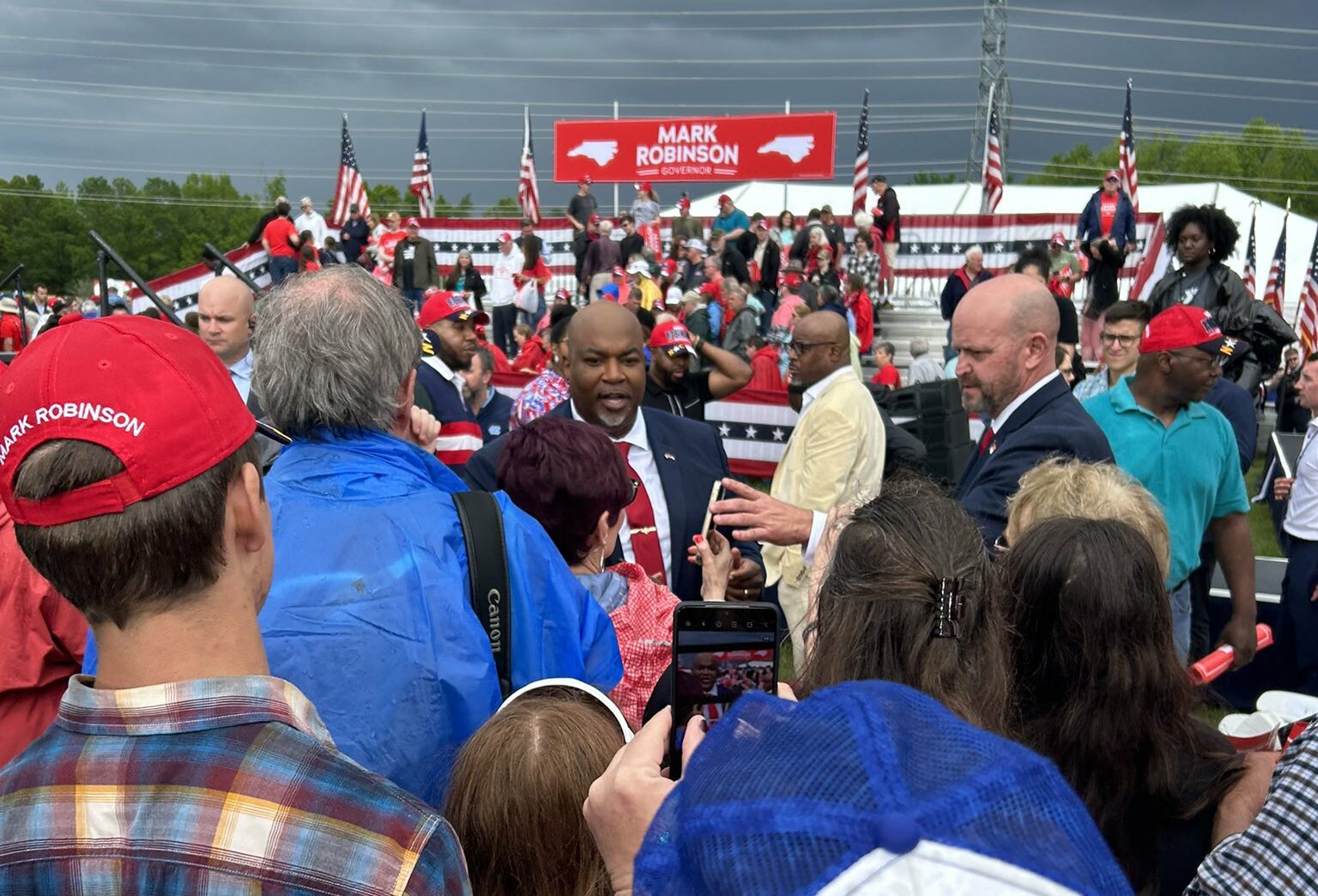In 1947, a group of 16 civil rights activists — eight Black, eight White — got on the bus to test a recent Supreme Court decision striking down Jim Crow segregation in interstate public transportation.
Little remembered today, their “Journey of Reconciliation” would inspire civil rights advocates for years, most notably the “Freedom Riders” who took a similar trip in 1961. But like the Freedom Rides, the Journey of Reconciliation met with intense and violent opposition – particularly in Chapel Hill, where the riders were first accosted by a mob, then arrested by police. (Police arrested the riders even though the law in question — mandating segregation on interstate public buses — had been struck down by the Supreme Court the year before.) Eventually, some of the riders served time on a chain gang – including Bayard Rustin, the famed activist who later helped organize the 1963 March on Washington.
Now, in 2022, local leaders are marking the 75th anniversary of the Journey of Reconciliation with a public event on Friday, May 20, at 2 p.m. in the Historic Courthouse in Hillsborough. (May 20 marks the 75th anniversary of the riders’ district-court trial.)
Get more information about Friday’s event here.
The event is entitled “The 1947 Journey of Reconciliation: A Long Road to Justice.” It features a keynote speech from UNC professor Gene Nichol, additional commentary from former Orange/Chatham public defender James Williams, poetry from Chapel Hill poet laureate CJ Suitt, and freedom songs from acclaimed vocalist Mary D. Williams.
Friday’s event is co-hosted by the Alliance for Historic Hillsborough, the Orange County Community Remembrance Coalition, North Carolina’s 18th Judicial District, and Carolina K-12 at Carolina Public Humanities.
97.9 The Hill’s Aaron Keck discussed the Journey of Reconciliation with James Williams. Listen:
James Williams: I think (the Journey of Reconciliation) was a significant step in the movement for equal rights and justice in this country. It is not well known, not even by people within Chapel Hill – where one of the more significant and unfortunate incidents took place, the arrest and prosecution, and even the assault and attack on several of the riders, by basically a white mob. So I think it’s important that we are going to address this. It was 75 years ago on May 20 that the original trial took place in the district court, located then in Chapel Hill, where four of the riders were convicted and sentenced to time on the chain gang.
Aaron Keck: Including Bayard Rustin.
Williams: Including Bayard Rustin. That is correct. The Freedom Rides, the Journey of Reconciliation, was initiated by the Fellowship of Reconciliation and the Congress of Racial Equality – so FOR and CORE. Bayard Rustin certainly was one of the primary architects, as was George Houser, and James Farmer. Just the year before, the US Supreme Court had decided a case involving Irene Morgan, where she had refused to get out of her seat on a bus trip to Baltimore. (In Virginia) she was asked to move to the back of the bus, she refused to do so – long story short, she was arrested, and the NAACP, Thurgood Marshall and his group, litigated that case before the US Supreme Court. And in 1946, the Court said (in Morgan v. Virginia) that there was no place for Jim Crow segregation in interstate travel. (But) CORE and the Fellowship of Reconciliation … knew that the fact that it is written in law doesn’t make it a reality. And so they wanted to get a better sense of how the (Court ruling) was being complied with. And so they rode through several states in what’s called the Upper South – Virginia, Tennessee, (Kentucky), and North Carolina. And it was here in North Carolina, especially when they stopped in Chapel Hill, that they ran into the most trouble.
Keck: Right in downtown Chapel Hill – there’s the (commemorative) plaque on Columbia Street there.
Williams: Yeah, right there near Columbia and Rosemary. The bus station was located near that intersection. As you mentioned, there is a plaque across the street from the bus station, that was erected, I believe, in 2008. But it was at that bus terminal on April 13, which was a Sunday, that the riders were to leave from Chapel Hill en route to their next stop, which was Greensboro, when – two of the riders were seated, one black and one white, I think that was Andrew Johnson and Joseph Felmet, in the front part of the bus. The bus driver asked them to move to the back. They refused to do so. So he went in to the police station, which was across the street, there where the homeless shelter used to be on Rosemary. He got law enforcement, came back out, arrested those two, (and) took them in.
(But) after they were removed from the bus, that’s when Bayard Rustin and Igal Roodenco – here again, a black male and a white male – moved into those same two seats. They subsequently were arrested. In the interim, a number of white cab drivers who were situated there at the bus station, became irate, irritated, began making threatening remarks, (and) actually attacked James Peck when he was headed into the bus station. And long story short, Charles Jones, who was the pastor of Presbyterian Church here in Chapel Hill, more or less came to the rescue – because by this time, the mob was surrounding the bus, and people were saying things like, “you’ll never get out of here alive on this bus.” So he took them in his car to his home. The mob followed them there, still making threats. And eventually (Jones) was able to get some students from UNC to transport them to their next destination, which was Greensboro.
Keck: Hearing you describe those details – this is going to sound like an odd question, but did the Freedom Riders, when they arrived, did they – did they know what they were getting into, in Chapel Hill?
Williams: That’s a good question. I don’t think they knew. Because while there had been some encounters at a couple of other stops, nobody was actually – for instance, when they stopped in Durham, I think there was some talk about arresting, but nobody actually was arrested. They had probably heard that Chapel Hill was a fairly progressive sort of liberal town. So I think they were somewhat taken aback by the reaction on that Sunday afternoon – because keep in mind, they came in on Saturday. Reverend Jones and some other ministers had them at some events over at the university. In fact, I think there may have even been a party, some social event. They were shown a good time. They had a chance to interact with people of different races. I think they may have even gone to church at a white church that Sunday morning. And so I think they were a bit surprised at the response at the bus station that Sunday afternoon, when they were about to leave.
Keck: Your talk on Friday is going to be about the role of attorneys in challenging Jim Crow, as it relates to transportation – and this in particular is an instance where the law that they were arrested and charged and convicted and sentenced for, on paper, didn’t exist. It had been struck down by the courts. It didn’t have any official legal force. And yet it was still being enforced and applied. So – what is the role of an attorney in a situation like that, where the justice system has already effectively decided that this law is not valid and yet it keeps being applied?
Williams: Well, you know, we see this time and time again in the history of this country. You even have constitutional amendments, the 13th, 14th, and 15th Amendments, that don’t really get enforced without persistent and consistent and courageous actions and advocacy on behalf of the people. And so, even though the US Supreme Court, the highest court in the land, had said that these riders had the right not to be forced to ride Jim Crow, you still had, on the books in these Southern states, segregation statutes and laws. So they ended up being charged with things like trespassing and other (similar) offenses. And so the role of the lawyers in those situations was to try to make sure that the court and the criminal justice system players, including the DA, acknowledged the fact that the Supreme Court was the supreme law of the land – and that despite what North Carolina’s law may say, this was unconstitutional to treat these riders in that respect. And they made those arguments both at the district and superior court level. And when (the riders) were convicted at the superior court, the case was appealed to the North Carolina Supreme Court, which basically rubber-stamped the result of the lower courts. And so in 1949, three of the riders, including Bayard Rustin, turned themselves in to the legal authorities in Hillsborough to begin serving that 30-day sentence on the chain gang. And it was there that Bayard Rustin wrote his famous article. That article got national attention and actually resulted in some changes in the system, and eventually the eradication of the chain gang, I believe, in the state of North Carolina.
Chapelboro.com does not charge subscription fees, and you can directly support our efforts in local journalism here. Want more of what you see on Chapelboro? Let us bring free local news and community information to you by signing up for our biweekly newsletter.

